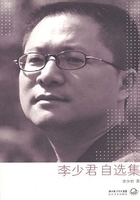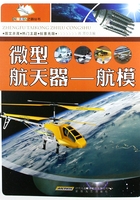In October, Anderson, who had never recovered from the strain of defending Fort Sumter, turned over to Sherman the very troublesome Kentucky command. Sherman pointed out to the visiting Secretary of War, Simon Cameron, that while McClellan had a hundred thousand men for a front of a hundred miles in Virginia, and Fremont had sixty thousand for about the same distance, he (Sherman) had been given only eighteen thousand to guard the link between them, although this link stretched out three hundred miles. Sherman then asked for sixty thousand men at once; and said two hundred thousand would be needed later on. "Good God!"said Cameron, "where are they to come from?" Come they had to, as Sherman foresaw. Cameron made trouble at Washington by calling Sherman's words "insane"; and Sherman's "insanity" became a stumbling-block that took a long time to remove.
Grant, in command at Cairo, began his career as a general by cleverly forestalling the enemy at Paducah, where the Tennessee flows into the Ohio. Then, on the seventh of November, he closed the first confused campaign on the Mississippi by attacking Belmont, Missouri, twenty miles downstream from Cairo, in order to prevent the Confederates at Columbus, Kentucky, right opposite, from sending reinforcements to Sterling Price in Arkansas. There was a stiff fight, in which the Union gunboats did good work. Grant handled his soldiers equally well; and the Union objective was fully attained.
Halleck, the Federal Commander-in-Chief for the river campaign of '62, fixed his headquarters at St. Louis. From this main base his right wing had rails as far as Rolla, whence the mail road went on southwest, straight across Missouri. At Lebanon, near the middle of the State, General Samuel R. Curtis was concentrating, before advancing still farther southwest against the Confederates whom he eventually fought at Pea Ridge. From St. Louis there was good river, rail, and road connection south to Halleck's center in the neighborhood of Cairo, where General Ulysses S. Grant had his chief field base, at the junction of the Mississippi and Ohio. A little farther east Grant had another excellent position at Paducah, beside the junction of the Ohio and the Tennessee.
Naval forces were of course indispensable for this amphibious campaign; and in Flag-Officer Andrew Hull Foote the Western Flotilla had a commander able to cooperate with the best of his military colleagues. Halleck's left--a semi-independent command--was based on the Ohio, stretched clear across Kentucky, and was commanded by a good organizer and disciplinarian, General Don Carlos Buell, whose own position at Munfordville was not only near the middle of the State but about midway between the important railway junctions of Louisville and Nashville.
Henry W. Halleck was a middle-aged, commonplace, and very cautious general, who faithfully plodded through the war without defeat or victory. He looked so long before he leaped that he never leaped at all--not even on retreating enemies. Good for the regular officework routine, he was like a hen with ducklings for this river war, in which Curtis, Grant, Buell, and his naval colleague Foote, were all his betters on the fighting line.
His opponent, Albert Sidney Johnston, was also middle-aged, being fifty-nine; but quite fit for active service. Johnston had had a picturesque career, both in and out of the army; and many on both sides thought him likely to prove the greatest leader of the war.
He was, however, a less formidable opponent than Northerners were apt to think. He was not a consummate genius like Lee. He had inferior numbers and resources; and the Confederate Government interfered with him. Yet they did have the good sense to put both sides of the Mississippi under his unified command, including not only Kentucky and Tennessee, Missouri and Arkansas, but the whole of the crucial stretch from Vicksburg to Port Hudson. In this they were wiser than the Federal Government with Halleck's command, which was neither so extensive nor so completely unified.
Johnston took post in his own front line at Bowling Green, Kentucky, not far south of Buell's position at Munfordville. He was very anxious to keep a hold on Kentucky and Missouri, along the southern frontiers of which his forces were arrayed. His extreme right was thrown northward under General Marshall to Prestonburg, near the border of West Virginia, in the dangerous neighborhood of many Union mountain folk. His southern outpost on the right was also in the same kind of danger at Cumberland Gap, a strategic pass into the Alleghanies at a point where Kentucky, Tennessee, and Virginia meet. Halfway west from there, to Bowling Green the Confederates hoped to hold the Cumberland near Logan's Cross Roads and Mill Springs. Westwards from Bowling Green Johnston's line held positions at Fort Donelson on the Cumberland, Fort Henry on the Tennessee, and Columbus on the Mississippi. All his Trans-Mississippi troops were under the command of the enthusiastic Earl Van Dorn, who hoped to end his spring campaign in triumph at St. Louis.
The fighting began in January at the northeastern end of the line, where the Union Government, chiefly for political reasons, was particularly anxious to strengthen the Unionists that lived all down the western Alleghanies and so were a thorn in the side of the solid South beyond. On the tenth Colonel James A.
Garfield, a future President, attacked and defeated Marshall near Prestonburg and occupied the line of Middle Creek. The Confederates, half starved, half clad, ill armed, slightly outnumbered, and with no advantage except their position, fought well, but unavailingly. Only some three thousand men were engaged on both sides put together. Yet the result was important because it meant that the Confederates had lost their hold on the eastern end of Kentucky, which was now in unrestricted touch with West Virginia.















